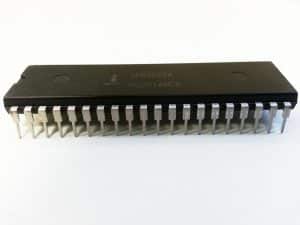Spintronic Devices: Electron Spin Computing
As technology continues to advance at an unprecedented rate, the world of computing has expanded far beyond traditional silicon-based devices. Among the emerging technology trends is spintronics, a field that combines the principles of magnetism and electronics to create innovative spintronic devices. These devices have the potential to revolutionize the computing industry, with their ability to process information using electron spin rather than electron charge. In this article, we will explore the fascinating world of spintronic devices, specifically focusing on electron spin computing and the potential it holds for the future of computing.
What are Spintronic Devices?
Spintronic devices are electronic devices that utilize the spin of electrons in addition to their charge to perform computing tasks. This is in contrast to traditional electronic devices that rely solely on the flow of electricity through conductors. Spintronics is based on the property of electrons called “spin,” which is a quantum mechanical property that gives electrons their inherent angular momentum. In simple terms, the spin of an electron can be either “up” or “down,” and this property can be manipulated to represent the binary digits of 0 and 1, just like traditional computers.
Spintronics has also been referred to as “spin electronics,” “spin-based electronics,” or “magneto electronics.” This field has not only opened new doors for computational devices, but it also has the potential to revolutionize other areas such as data storage, sensing, and energy harvesting.
What is Electron Spin Computing?
Electron spin computing is a novel approach to computing that utilizes the spin state of electrons for data processing. Unlike traditional computing, which relies on the flow of electrons, electron spin computing relies on the energy differences between the spin states of electrons to perform logical operations. This makes it a potentially more efficient and faster alternative to traditional computing methods.
One of the most significant advantages of electron spin computing is its potential for low power consumption. Since electron spin devices use less energy for computing compared to traditional devices, it can greatly reduce the power consumption of electronic devices. This is important not only for portable electronic devices like laptops and mobile phones but also for data centers and other large-scale computing facilities.
The Advantages of Spintronic Devices
Spintronic devices have several advantages over traditional electronic devices, which make them an attractive option for future computing systems.
Increased Efficiency
As mentioned earlier, one of the most significant advantages of spintronics is its potential for low-power computing. Traditional electronic devices consume a significant amount of power in switching logic and storing information, which is not the case with spintronic devices. This makes them much more energy-efficient, resulting in less heat generation and improving the overall performance and lifespan of electronic devices.
Higher Speeds
Spintronic devices have the potential to operate at significantly higher speeds compared to traditional electronic devices. This is because electron spin operations are less affected by the resistance and capacitance present in modern electronic systems. In other words, information can be processed and transmitted faster and more efficiently in spintronic devices, ultimately resulting in faster computing speeds.
Better Stability
Since spintronic devices do not rely on the flow of electrons, they are much less prone to external interference that can cause errors in traditional electronic devices. This makes spintronic devices more stable and reliable, making them suitable for use in harsh environments.
Large Storage Capacity
Spintronic devices have the potential to store much more information in a smaller area compared to traditional electronic devices. This is because electron spin can take on the values of 0 and 1 simultaneously, which allows for more data to be stored and processed in a compact device.
The Future of Spintronic Devices: Potential Applications and Challenges
The potential applications for spintronic devices are vast, ranging from data storage and transfer to advanced computing and quantum computing. With the increasing demand for faster and more efficient computing systems, the potential for spin-based electronics is growing.
However, like with any emerging technology, there are still some challenges that need to be addressed before spintronic devices become mainstream. One of the main challenges is the integration of spintronics with existing electronic systems. Developing the necessary technology and techniques to combine spintronic devices with traditional electronic devices is a crucial step in bringing spintronics to the market.
Another challenge is the development of materials that can support the spintronic phenomena at room temperature. While spintronics can operate at low temperatures, it is essential to develop materials that can support spintronic devices in everyday conditions to make them practical for wide-scale use.
The Bottom Line
In conclusion, spintronic devices, specifically those incorporating electron spin computing, have the potential to significantly impact the future of computing. With their increased efficiency, higher speeds, and better stability, spintronic devices can pave the way for a new generation of computing devices that are faster, more reliable, and energy-efficient. As we continue to push the boundaries of technology, spintronics is undoubtedly a field to watch out for in the years to come.










